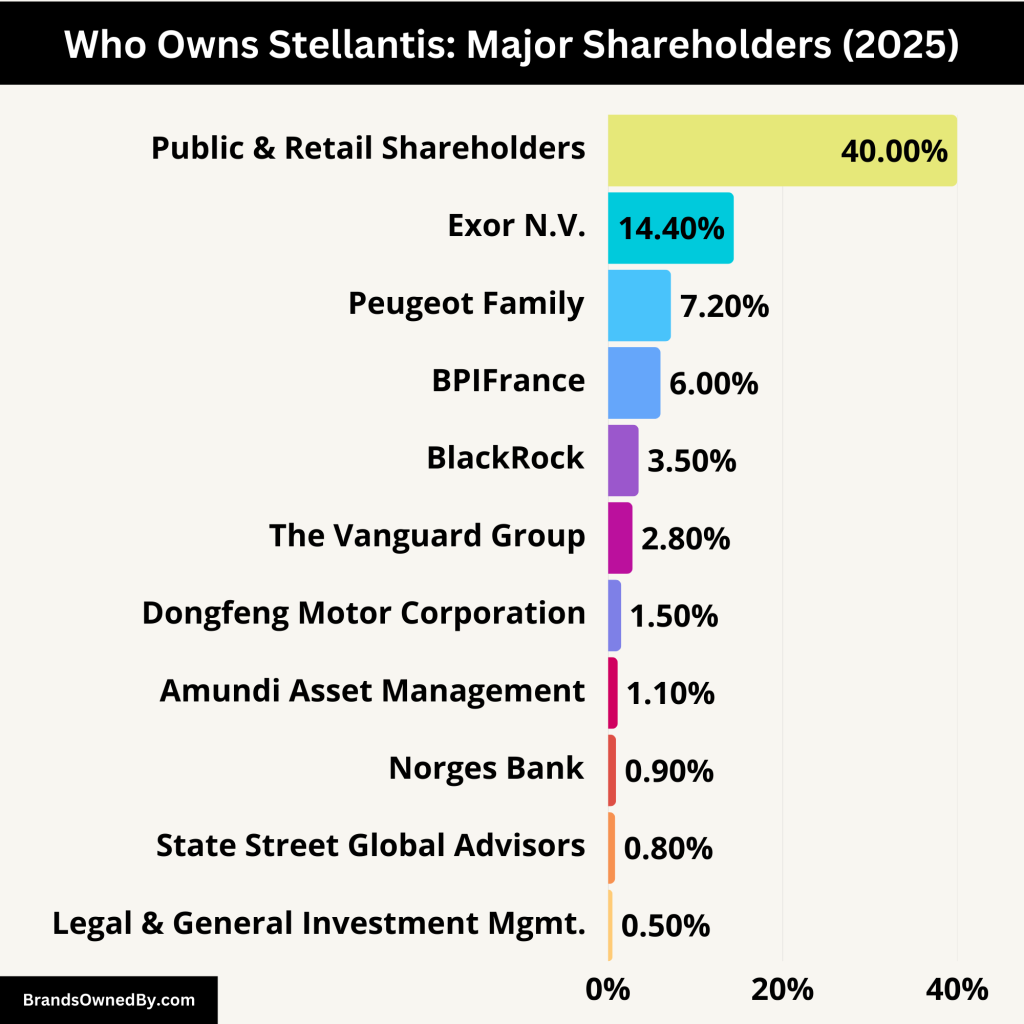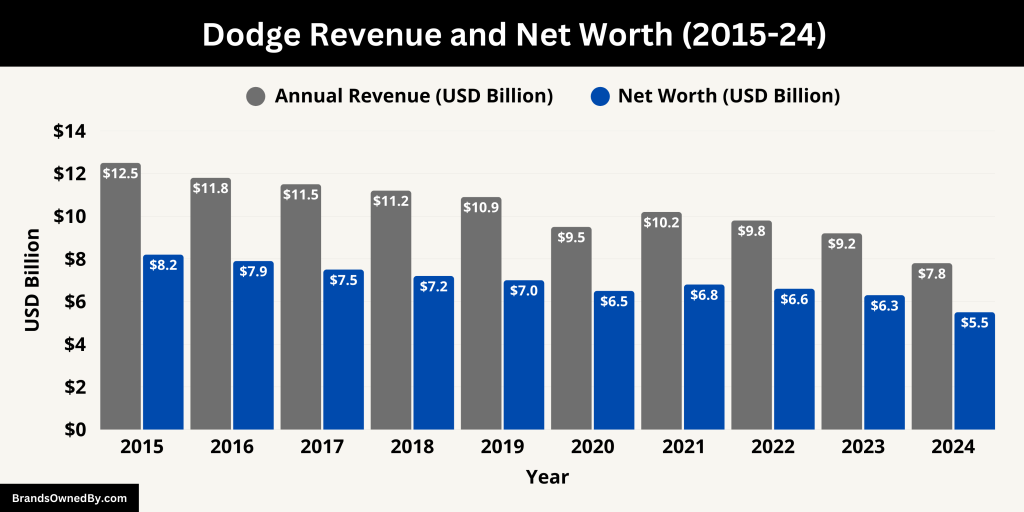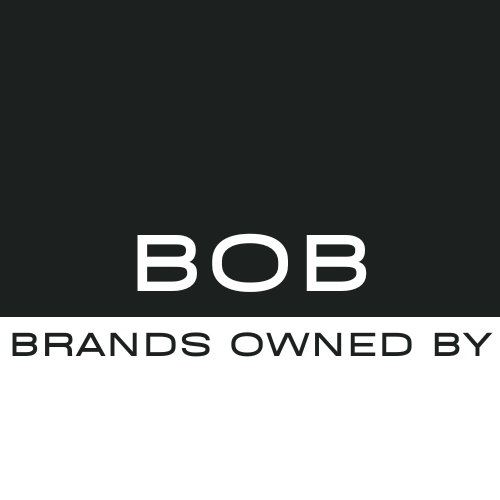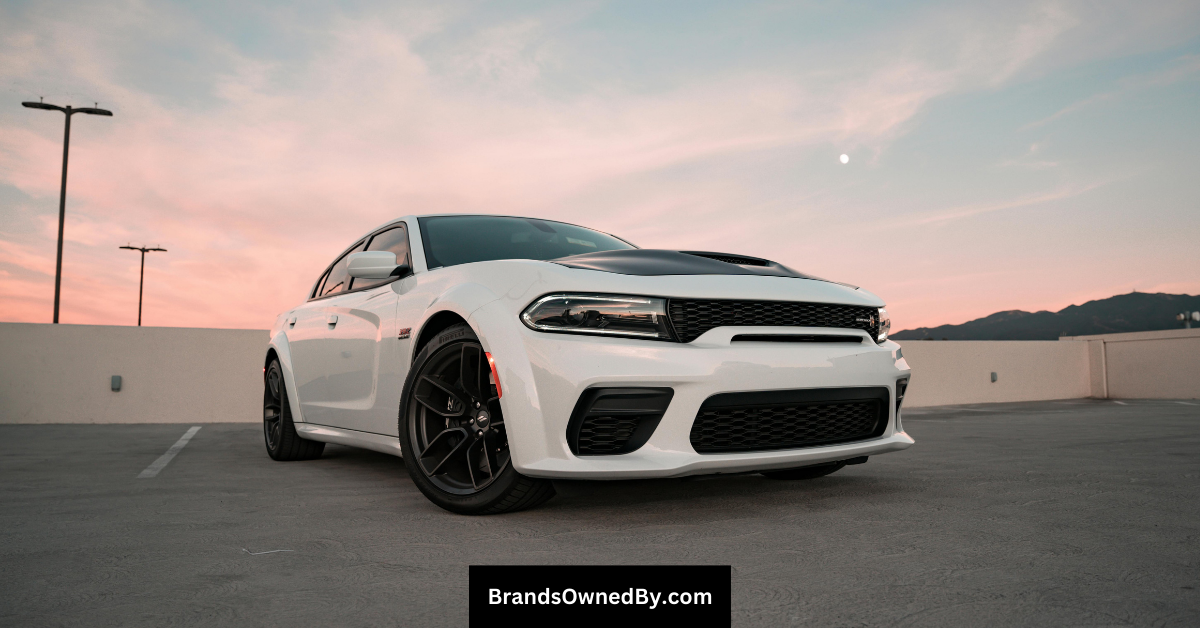Dodge is one of the most iconic names in the American automobile industry. Many car enthusiasts ask, who owns Dodge today? This article provides a detailed look into the ownership, history, financials, and the companies connected with Dodge.
History of Dodge
Dodge was founded in 1900 by brothers Horace and John Dodge. Initially, they supplied parts and assemblies to Detroit automakers.
By 1914, they began building their vehicles. The Dodge Brothers brand quickly gained recognition for durability and performance. After both founders died in 1920, the company was sold to Dillon, Read & Co. in 1925. It was later acquired by Chrysler Corporation in 1928.
Dodge evolved under Chrysler’s leadership. Chrysler itself went through major changes. It merged with Daimler-Benz in 1998 to form DaimlerChrysler, which ended in 2007. Chrysler then struggled through the 2008 financial crisis and eventually became part of Fiat in 2009.
This led to the formation of Fiat Chrysler Automobiles (FCA). Dodge continued as a key brand within FCA.
In 2021, FCA merged with the French group PSA to create a new multinational automaker—Stellantis. Dodge became one of the 14 brands under Stellantis.
Who Owns Dodge?
Dodge is currently owned by Stellantis N.V., a global automotive company headquartered in the Netherlands.
Stellantis was formed in January 2021 from a 50-50 merger between Fiat Chrysler Automobiles and PSA Group. The ownership of Dodge is now embedded within Stellantis, which manages various brands from both legacy groups.
The largest shareholder in Stellantis is Exor N.V., the holding company controlled by Italy’s Agnelli family. Though Stellantis is publicly traded, Exor plays a key role in shaping its future through its significant ownership stake and board influence.

How Stellantis Acquired Dodge
Dodge began as an independent company in the early 1900s, became part of Chrysler Corporation in 1928, and remained under Chrysler’s umbrella for most of the 20th century. The turning point came in the 2000s, during a time of extreme financial pressure in the auto industry.
- 2009: Fiat Enters the Picture
After the 2008 global financial crisis, Chrysler filed for bankruptcy. To stay afloat, the U.S. government brokered a deal in 2009, allowing Fiat S.p.A., the Italian automaker, to acquire a controlling interest in Chrysler Group LLC. Dodge, as part of Chrysler, was included in this rescue. - 2014: Formation of Fiat Chrysler Automobiles (FCA)
Fiat gradually increased its stake and, by 2014, fully merged with Chrysler to create Fiat Chrysler Automobiles (FCA). Dodge became one of FCA’s core American brands, alongside Jeep, Ram, and Chrysler. During this period, Dodge was repositioned as a high-performance brand, spinning off Ram as a standalone truck division. - 2021: Creation of Stellantis
In 2021, FCA merged with Groupe PSA, the parent of Peugeot and Citroën, to form Stellantis N.V.. This 50-50 merger officially placed Dodge under Stellantis ownership. Stellantis inherited all of FCA’s brands, including Dodge, Ram, Jeep, and Chrysler.
Dodge, therefore, became part of Stellantis through a series of strategic transformations, beginning with the Fiat-Chrysler deal and culminating in the FCA-PSA merger.
Dodge’s Role Under Stellantis
Dodge continues to operate as a distinct brand within the Stellantis brand portfolio, with a strong identity focused on American muscle and performance vehicles. It is part of the North America Business Unit, one of Stellantis’ largest and most profitable divisions.
Under Stellantis, Dodge plays several strategic roles:
- Performance Leader: Dodge serves as the performance division, focusing on high-horsepower models like the Charger, Challenger, and Durango SRT. It keeps Stellantis competitive in the sports and muscle car segment, which is especially relevant in North America.
- Brand Heritage: Dodge is one of the oldest car brands in America, dating back to 1900. Its legacy appeals to car enthusiasts and loyal customers. Stellantis leverages this legacy to maintain cultural relevance and brand value.
- Profit Contributor: While Dodge doesn’t have a large international presence, its high-margin vehicles contribute significantly to Stellantis’ U.S. revenue. Models like the Hellcat and Scat Pack bring in strong profits per unit.
- Electric Performance Pivot: Stellantis is using Dodge as the spearhead for its move into electric muscle cars. The Charger Daytona SRT EV is expected to lead this transformation, making Dodge a key brand in Stellantis’ electrification strategy.
How Stellantis Supports Dodge
Stellantis provides Dodge with shared global resources, including:
- Access to global R&D and electric vehicle platforms
- Shared procurement and supply chain systems
- Use of Stellantis’ wide dealer network and marketing reach
- Advanced safety, infotainment, and connectivity tech
While Dodge retains a distinctly American identity, its backend operations—like engineering, manufacturing strategy, and product development—are increasingly connected to Stellantis’ global platforms.
Independence and Control
Despite being under Stellantis, Dodge retains creative and marketing autonomy. It is led by its own CEO-like brand chief and product team. This allows Dodge to maintain its aggressive, performance-first image without diluting its identity.
However, major investments, platform decisions, and long-term strategy are made at the Stellantis executive level, led by CEO Carlos Tavares. Stellantis’ board and senior management determine which brands get funding for electrification and global expansion, including Dodge.
Who is the CEO of Dodge?
The current CEO of Dodge is Timothy Kuniskis, who serves as CEO of the Dodge and Ram brands within Stellantis. Kuniskis has held this position since January 2021, following the formation of Stellantis after the FCA and PSA merger.
Kuniskis is widely known for his bold vision of turning Dodge into a modern performance brand. He led the development of several high-horsepower vehicles, such as:
- The Dodge Challenger SRT Hellcat
- The Charger SRT Redeye
- The Durango SRT Hellcat
- And the upcoming Dodge Charger Daytona SRT EV
He has repeatedly emphasized that Dodge will retain its muscle car legacy even as it transitions to electric vehicles. Under his leadership, Dodge announced the retirement of the HEMI V8-powered Challenger and Charger by 2023, replacing them with electrified models while preserving brand identity.
Leadership Style and Strategic Focus
Timothy Kuniskis is known for his product-driven leadership and deep understanding of car culture. He prioritizes:
- Bold design and engineering
- Niche marketing to enthusiasts
- High-performance variants with strong profitability
He works closely with Stellantis’ global product development and marketing teams, but maintains a relatively independent voice for Dodge’s brand image.
Stellantis Decision-Making Structure
As a brand CEO, Kuniskis reports to the global CEO of Stellantis, Carlos Tavares. Major strategic decisions such as:
- Platform allocation
- Electrification investment
- Global expansion
- Budget approval
…are decided at the Stellantis executive committee level. However, Dodge’s internal brand strategies, product marketing, and design direction are overseen by Kuniskis.
The Stellantis leadership team is structured to allow each of its 14 brands—including Dodge, Jeep, Peugeot, Citroën, Alfa Romeo, and Maserati—to operate semi-independently, with brand CEOs accountable for performance.
Past CEOs and Leaders of Dodge
Over the years, Dodge has been shaped by multiple key executives during its time under Chrysler, DaimlerChrysler, FCA, and now Stellantis. Here are some notable figures who have played important roles in Dodge’s leadership:
Ralph Gilles
- Role: Former President and CEO of Dodge (2009–2011)
- Key Contributions: Gilles is credited with giving Dodge a performance-driven identity after the Chrysler bankruptcy. Under his direction, the Dodge Charger and Challenger were modernized and positioned as performance icons.
Reid Bigland
- Role: CEO of Dodge (2013–2015)
- Key Contributions: Bigland brought a business-focused approach, boosting Dodge’s marketing and sales. He launched high-volume trims and focused on broadening Dodge’s appeal to younger drivers.
Sergio Marchionne
- Role: CEO of Fiat Chrysler Automobiles (2009–2018)
- Key Contributions: Though not Dodge’s brand CEO, Marchionne oversaw its rebirth within FCA. He approved performance-focused strategies and was instrumental in separating Ram from Dodge, allowing each to specialize.
Olivier François
- Role: Head of Marketing for FCA and occasional brand leader
- Key Contributions: François helped elevate Dodge’s image globally with bold, often humorous advertising campaigns that helped redefine the brand’s attitude and edge.
Each of these executives left a mark on Dodge’s transformation from a full-line automaker to a performance-focused brand catering to muscle car enthusiasts.
Annual Revenue and Net Worth of Dodge

In 2024, Dodge experienced a significant decline in U.S. sales, with a total of 141,730 units sold, marking a 29% decrease from the 199,458 units sold in 2023.
This downturn was influenced by the discontinuation of key models like the Dodge Charger and Challenger, which had been central to Dodge’s lineup.
Despite the overall decline, certain models showed resilience:
- Dodge Hornet: Sales increased by 120% year-over-year, with the Hornet R/T, Dodge’s first electrified vehicle, accounting for 57% of total Hornet sales.
- Dodge Durango: Q4 2024 retail sales rose by 40% year-over-year, achieving the best Q4 retail sales since 2021.
While Dodge’s net worth isn’t publicly reported separately from Stellantis, its valuation can be inferred from its brand equity and market presence. As of April 2025, Dodge’s net worth is estimated to be around $5.5 billion.
Here’s an overview of the historical revenue and net worth of Dodge based on the U.S. sales volumes, average transaction prices (ATP), and market trends:
| Year | Estimated Revenue (USD) | Estimated Net Worth (USD) | Notes |
|---|---|---|---|
| 2015 | $12.5 billion | $8.2 billion | Strong sales of Charger and Challenger |
| 2016 | $11.8 billion | $7.9 billion | Slight dip in sales volume |
| 2017 | $11.5 billion | $7.5 billion | Stable performance |
| 2018 | $11.2 billion | $7.2 billion | Introduction of performance trims |
| 2019 | $10.9 billion | $7.0 billion | Market shifts towards SUVs |
| 2020 | $9.5 billion | $6.5 billion | Impact of global pandemic |
| 2021 | $10.2 billion | $6.8 billion | Recovery begins |
| 2022 | $9.8 billion | $6.6 billion | Continued transition to electrification |
| 2023 | $9.2 billion | $6.3 billion | Discontinuation of Charger and Challenger announced |
| 2024 | $7.8 billion | $5.5 billion | Full impact of model discontinuations and shift to EVs |
Brands Owned by Dodge
Dodge operates as a distinct brand focused on high-performance and muscle vehicles. Dodge historically had several sub-brands and divisions under its name, particularly when it was part of Chrysler.
Here are the key product lines and divisions that operate under the Dodge badge or were previously part of its structure:
| Brand/Division | Type | Status | Key Details |
|---|---|---|---|
| Dodge Charger | Sedan (Performance) | Discontinued (2023) | Iconic 4-door muscle sedan; set to return as an EV in 2025. |
| Dodge Challenger | Coupe (Performance) | Discontinued (2023) | Two-door muscle car; home to Hellcat and Super Stock variants. |
| Dodge Durango | SUV | Active | Mid-size SUV with performance-focused trims like the SRT 392 and Hellcat. |
| Dodge Hornet | Crossover SUV | Active (launched 2023) | Dodge’s first electrified vehicle; compact SUV built on Alfa Romeo platform. |
| Dodge Grand Caravan | Minivan | Discontinued (2020) | Legendary minivan; one of North America’s best-selling family vehicles. |
| Ram Trucks | Truck Line (formerly under Dodge) | Split into separate brand (2009) | Now an independent Stellantis brand; previously marketed as Dodge Ram. |
| SRT Division | Performance Engineering | Integrated with Dodge | High-performance division behind Hellcat and Redeye models; merged fully into Dodge brand identity. |
Dodge Charger
The Dodge Charger is one of the most iconic nameplates under the Dodge brand. Originally introduced in 1966 as a two-door muscle car, it has evolved over the decades into a four-door performance sedan. Known for its aggressive styling and powerful V6 and V8 engines, the Charger was a core part of Dodge’s modern performance identity.
As of 2023, production of the current-generation Charger has ceased. However, Dodge is preparing to launch an all-electric version called the Charger Daytona SRT EV, which is set to lead the brand’s new era of electric muscle.
Dodge Challenger
The Challenger is Dodge’s classic two-door muscle coupe, revived in 2008 to compete with the Ford Mustang and Chevrolet Camaro. It maintained a retro design and was known for offering the most powerful production muscle cars in the world, including the SRT Hellcat, Redeye, and Super Stock trims.
Production of the Challenger ended in 2023, as Dodge shifts focus to electrified performance vehicles. However, special edition “Last Call” models celebrated the vehicle’s legacy before retirement.
Dodge Durango
The Dodge Durango is the brand’s mid-size SUV. Originally introduced in the late 1990s, the Durango has transformed into a family SUV with real muscle. Higher trims like the Durango SRT 392 and Durango SRT Hellcat offer exceptional horsepower, making it one of the most powerful SUVs on the market.
The Durango remains in production and is expected to continue as Dodge’s core utility vehicle while the brand transitions into electrified offerings.
Dodge Hornet
The Dodge Hornet is the newest addition to the lineup. It’s a compact crossover based on the Alfa Romeo Tonale platform but with Dodge’s signature design and tuning. Launched in 2023, the Hornet marks Dodge’s return to the compact market and also its first electrified model, with the Hornet R/T PHEV (plug-in hybrid).
The Hornet is positioned to attract younger buyers and offers features like all-wheel drive, performance suspensions, and digital connectivity, while also supporting Stellantis’ electrification strategy.
Dodge Caravan (Discontinued)
The Dodge Grand Caravan was a pioneer in the minivan segment and one of the most popular minivans in North America for decades. Introduced in 1984, it defined the family vehicle market.
However, Stellantis discontinued the Grand Caravan in 2020, with Chrysler continuing the minivan legacy through the Chrysler Pacifica and Voyager.
Dodge Ram (Now a Separate Brand)
Ram Trucks were once part of the Dodge lineup under the name “Dodge Ram.” In 2009, Chrysler split Ram into a standalone brand to better focus on the truck market. Since then, Ram has operated independently within the Stellantis brand architecture, although it shares a deep legacy with Dodge.
Today, Ram is one of the top truck brands in North America, offering vehicles like the Ram 1500, 2500, and 3500.
Dodge SRT (Performance Division)
SRT, short for Street & Racing Technology, is not a standalone brand but a performance division that developed high-powered versions of Dodge vehicles. Famous SRT models include:
- Dodge Challenger SRT Hellcat
- Dodge Charger SRT Hellcat
- Dodge Durango SRT
SRT branding has been increasingly integrated into Dodge’s core identity, especially under Timothy Kuniskis’ leadership. Dodge is now known as Stellantis’ main performance brand, with SRT technologies deeply embedded in its engineering.
Conclusion
So, who owns Dodge?
Dodge is owned by Stellantis N.V., a multinational formed through a merger of Fiat Chrysler and PSA Group.
The largest shareholder is Exor N.V., controlled by the Agnelli family. While Dodge is a powerful standalone brand, its leadership and future direction are managed under the broader Stellantis structure. The brand continues to evolve, especially with new developments in electric and hybrid performance vehicles.
FAQs
Is Dodge still an American company?
Dodge is an American brand, but it is owned by Stellantis, a Dutch-domiciled multinational company. Most of Dodge’s production and engineering still happens in the U.S.
Who founded Dodge?
Dodge was founded by Horace and John Dodge in 1900. They started by making parts and later became full vehicle manufacturers.
When did Dodge separate from Ram?
Dodge and Ram became separate brands in 2009. Ram now focuses solely on trucks and commercial vehicles.
Is Dodge going electric?
Yes, Dodge is working on electric muscle cars. The Dodge Charger Daytona EV is one of the upcoming models expected to lead this transition.
Does GM still own Dodge?
No, General Motors (GM) does not own Dodge. Dodge was previously part of the Chrysler Corporation, which merged with Fiat in 2009 to form Fiat Chrysler Automobiles (FCA). In 2021, FCA merged with PSA Group to form Stellantis, which now owns Dodge.
What person owns Dodge?
Dodge is owned by Stellantis N.V., a global automotive conglomerate. It does not have a single person owner but is part of the corporation that includes multiple brands like Jeep, Ram, Peugeot, and more. The CEO of Stellantis is Carlos Tavares.
Why is RAM no longer Dodge?
In 2009, Chrysler decided to separate Ram from the Dodge brand to focus more on trucks. The Ram brand was established to cater specifically to the pickup truck market, allowing Dodge to focus more on cars and performance vehicles. Ram became a separate brand under Fiat Chrysler Automobiles (FCA) and later under Stellantis.
Does Dodge own Lamborghini?
No, Dodge does not own Lamborghini. Lamborghini is a luxury Italian automaker owned by Audi, which is a subsidiary of Volkswagen Group. Dodge is a brand under Stellantis, which does not own Lamborghini.
What does SRT stand for?
SRT stands for Street & Racing Technology, which is the performance division within Dodge (and previously Chrysler). It’s responsible for developing high-performance versions of vehicles, such as the Charger SRT Hellcat and Challenger SRT Hellcat.
What animal is the Dodge logo?
The Dodge logo is represented by a ram, which is an animal known for its strength and aggressiveness. This symbolism aligns with the brand’s identity of producing powerful and high-performance vehicles.
Is Ram better than Dodge?
Ram and Dodge are now separate brands. While Ram focuses on trucks and commercial vehicles, Dodge specializes in performance cars and SUVs. Whether Ram is “better” than Dodge depends on the buyer’s needs: if you’re looking for a high-performance muscle car, Dodge is ideal; if you need a truck, Ram is better.
Who makes Dodge engines?
Dodge engines are manufactured by Stellantis (formerly Fiat Chrysler Automobiles or FCA). The engines are designed and produced within Stellantis’ global engineering and manufacturing facilities. Dodge’s iconic HEMI engines, for example, are produced by Stellantis.
Is Dodge still a brand?
Yes, Dodge is still a brand under Stellantis. While the company has shifted focus to high-performance cars and SUVs, Dodge remains a key brand, especially in the North American market, with vehicles like the Dodge Charger, Challenger, and Durango.
Who originally owned Dodge?
Dodge was originally founded by John Dodge and Horace Dodge in 1900. The company was initially part of the Dodge Brothers Motor Vehicle Company, which was acquired by Chrysler Corporation in 1928. Chrysler then became the brand’s long-time owner until the formation of Fiat Chrysler Automobiles (FCA), and later Stellantis.
Did Dodge own Ferrari?
No, Dodge never owned Ferrari. However, Chrysler, Dodge’s former parent company, did own a minority stake in Ferrari for a period during the 1980s. This stake was eventually sold, and Ferrari is now owned by Exor, the holding company of the Agnelli family.
Is Dodge GM or Ford?
Neither. Dodge is part of Stellantis, a company formed from the merger of Fiat Chrysler Automobiles (FCA) and PSA Group. GM (General Motors) and Ford are separate automotive companies, with GM owning brands like Chevrolet and Cadillac, and Ford operating its own brand.
Dodge is owned by which country?
Dodge is owned by Stellantis, which is a multinational corporation based in the Netherlands. Stellantis was created by merging Fiat Chrysler Automobiles (FCA) and the Peugeot-Citroën (PSA) Group, which is based in France.
Is Dodge owned by Ford?
No, Dodge is not owned by Ford. Dodge is part of Stellantis, a multinational automotive group formed by the merger of Fiat Chrysler Automobiles (FCA) and PSA Group. Ford is a separate company with its own brand.
Is Dodge owned by GM?
No, Dodge is not owned by GM. Dodge is a brand under Stellantis, which was formed by the merger of Fiat Chrysler Automobiles (FCA) and the PSA Group. General Motors (GM) is a completely separate company that owns brands like Chevrolet, GMC, Buick, and Cadillac.
Is Jeep owned by Dodge?
Jeep is also owned by Stellantis, the same parent company as Dodge. Jeep and Dodge are both part of Stellantis’ global portfolio of brands. While they share the same parent, Jeep focuses on off-road vehicles, while Dodge specializes in performance vehicles.
Who bought Dodge Motor Company?
Chrysler Corporation acquired Dodge Motor Company in 1928. The Dodge brothers, John and Horace, founded the company in 1900, but it was eventually bought by Chrysler to strengthen its position in the automotive market.
Is Dodge owned by Chrysler?
Yes, Dodge is owned by Chrysler. Chrysler Corporation acquired Dodge in 1928. Later, Chrysler became part of Fiat Chrysler Automobiles (FCA) and then merged with PSA Group to form Stellantis, which now owns the Dodge brand.
Who owns Dodge Automotive?
Dodge Automotive is owned by Stellantis, a multinational automotive group formed by the merger of Fiat Chrysler Automobiles (FCA) and the PSA Group (Peugeot, Citroën). Stellantis is based in the Netherlands and owns 14 brands, including Dodge, Jeep, Ram, and others.

